There is no doubt that electric bicycles are better for the environment, and everybody should ride one. However, if you are like most people, you probably looked into getting one, then you saw the price tag and thought: "Yeah, maybe not today"!
These vehicles go from anything between $600 to $2500, which (in this economy), is a significant investment for the average American. So, is it worth getting one? Let's dissect this matter and figure out why the prices of electric bikes are still so high inspired by their apparent benefits for the environment.
1. COSTLY BATTERIES.
The battery lies at the heart of electric bicycles, and it is the principal reason why they are so expensive. Most modern e-bikes are powered by high-capacity lithium-ion batteries, similar to those found in electric cars and other high-end electronics. These lithium-ion batteries could cost up to about $15,000 (depending on the size and use).
Bike manufacturers still love these batteries, and truth be told, they are simply lighter, more compact and have a higher density compared to similar options such as lead acid batteries. They offer higher specific energy, higher energy density, higher energy efficiency, a longer life cycle, and a longer calendar life.
So, what exactly makes them so expensive?

Materials Used: Lithium-ion batteries are made from rare and costly materials like lithium, cobalt, and nickel. Their high cost comes from how complex and environmentally taxing these minerals are to extract and process.
To extract lithium from brine, for example, a company has to pump lithium-rich brine to the surface and evaporate the water, a process that takes a long time and significant investment in infrastructure.
Capacity and Performance: Only the best batteries are used when it comes to electric bikes. The capacity of a battery is measured in watt-hours (WH) and directly affects the range and performance of the e-bike. Most E-bikes use higher-capacity batteries, which provide longer ranges but come at a higher price.
Durability and Safety: Manufacturers invest in costly materials and technologies to prevent overheating, overcharging, and other issues. If these issues are not properly taken care of, the battery's longevity and safety could be compromised. This cost is then reflected in the high prices of electric bicycles.
EXPENSIVE MOTORS
E-bikes typically use one of three motors: hub motors, mid-drive motors, or friction drive motors, and none of these is cheap. Let's explore why these motors are so costly:

Quality and Efficiency: Some e-bike motors are considered “high-quality”, implying that they are more efficient and offer better power output and longevity. These are the motors that are designed to withstand various weather conditions and the stresses of different terrains. The higher the quality of the motor used on the E-bike the more the price tag.
Advanced Features: Some e-bike motors have advanced features that increase the cost of production. Regenerative braking, for example, is a new and advanced technology that recaptures energy during braking and redistributes it to extend battery life. Like in all other industries, new technology in bike manufacturing is especially expensive.
Brand and Technology: Reputable brands often charge premium prices for their motors due to their brand reputation and superior technology. Bike motor brands such as Bosch, Shimano, and Ba Fang produce reliable and high-performing motors, which contribute to the high cost of E-bikes.
3. ELECTRONICS AND SENSORS
E-bikes are made of electronic components such as torque, cadence temperature, speed, and battery management system sensors that manage and control the bike's operation. These sensors and controllers ensure safety, convenience and accessibility for the rider.
Controllers: The controller can be said to be the brain of the bike, managing power delivery from the battery to the motor. Modern E-bike brands use advanced controllers to offer smoother power delivery, better efficiency, and customizable riding modes.
Sensors: Sensors are vital to enhancing performance and safety on an E-bike. Torque sensors, for instance, measure the force applied to the pedals and adjust the motor assistance accordingly. Cadence sensors detect the pedaling speed and adjust the motor power. These sensors add complexity and cost to the e-bike.
5. INNOVATION AND DEVELOPMENT: RESEARCH AND DEVELOPMENT COSTS
The e-bike industry is highly competitive and constantly evolving. Manufacturers invest heavily in research and development (R&D) to improve battery life, motor efficiency, and overall bike performance. The E-bike industry spends billions of dollars annually in the following areas of research and development:

New Technologies: A mere decade ago, it was not possible to integrate your E-bike with smart devices to monitor speed and distance. Recent innovations such as wireless connectivity, advanced battery management systems, and integration with smart devices are only possible after substantial R&D investment.
Prototyping and Testing: Developing new models involves extensive prototyping and testing to ensure reliability and safety. Practically every part of the bike needs to be tested and declared safe before being released onto the market. The frame and chassis, for example, are tested for structural integrity and weight distribution while the motor is tested for power output, energy efficiency and heat dissipation. These processes are costly and contribute to the final price of the e-bike.
6. CRAFTSMANSHIP: ASSEMBLY AND MANUFACTURING.
Compared to traditional bicycles, assembling e-bikes is more complex and time-consuming. The electric bike is held together by a web of complex electrical components made up of wires and connectors which link the motor and battery to the brakes and to other bike parts. Skilled labor and precise manufacturing techniques are needed to pull of this engineering challenge, which are usually rare and expensive.
Labor Costs: Skilled technicians are needed to assemble the e-bike's electrical components, ensuring everything functions correctly and safely. This is highly specialized labor, and putting together a team of experts is costly.
Quality Control: Rigorous quality control processes are essential to maintaining high standards and preventing defects. These processes have been known to be immensely time consuming and involve additional labor and costs.
7. MARKET DYNAMICS: SUPPLY CHAIN AND DEMAND
External factors also play a significant role in the pricing of e-bikes. These are factors that are generally associated with the nature of business and the world market. The cost of raw materials, for example, sometimes spikes suddenly, resulting in massive increases in the prices of metals, alloys and rubber needed to manufacture electric bikes.
Supply Chain Issues: The global supply chain for e-bike components can be affected by various factors such as logistics issues, tariffs, geopolitical tensions, and natural disasters. These issues can drive up the cost of materials and components.
Market Demand: The rising popularity of e-bikes has increased demand, sometimes outpacing supply. High demand can lead to higher prices, especially for premium models. Other economic factors such as inflation, changes in currency exchange rates also affect prices of e-bikes.
8. THE PRESTIGE FACTOR: BRAND AND FEATURES
Brands always find a way to distinguish themselves by developing high-quality products. The brand and features of an e-bike significantly influence its price. Established brands with a reputation for quality and innovation often command higher prices. Consumers are willing to pay a premium for the assurance of reliability and performance.

However, as all savvy customers know, good branding does not always mean big price tags. There are few bike brands in the market that genuinely care about customer experience and make products with a reasonable price-quality ratio. One such brand is Viribus. With a company policy that prioritizes affordable pricing without sacrificing quality, Viribus has quickly positioned itself as one of the leading providers of electric bicycles in the market.
Various’ collection of bikes and tricycles offers a variety of models for clients with different riding needs and preferences, all at an affordable price. Check out one of the favorites, the Viribus Panther Electric Bicycle to see what Viribus bikes are all about.
THE VIRIBUS BZ1 STEP-THRU ELECTRIC BIKE

|
SPECIFICATION |
DETAIL |
|
Motor |
48V, 500W (Peak 1000W) |
|
Battery |
48V 13A, 624 Wh high-tech lithium battery |
|
Top Speed |
20 Mph with throttle, 24 Mph with pedal |
|
Tires |
26 x 2.5'' puncture-resistant liner |
|
Brakes |
Mechanical disc brakes |
|
Frame |
6061 Aluminum frames |
As technology continues to evolve and the market grows, prices may become more competitive. However, for now, the investment in an e-bike reflects the sophisticated engineering and innovation that go into creating these remarkable machines. Moreover, brands like Various will always exist to ensure reasonable pricing, and extend the optimal riding experience to all riders and enthusiasts. Check out various for the most affordable bike on the market, and other relevant information on how the top 5 bike specs are for first-time buyers.

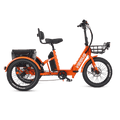


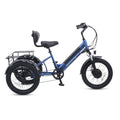
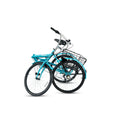
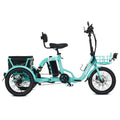

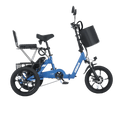







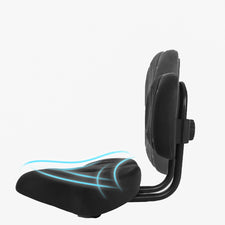





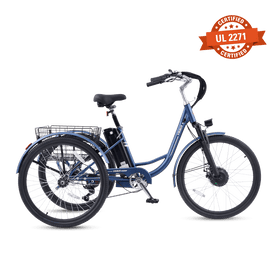
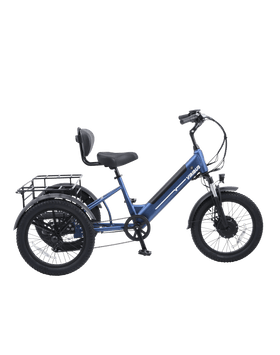



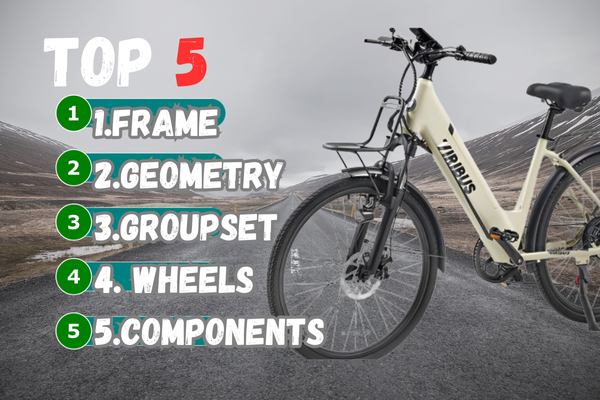

Leave a comment
All comments are moderated before being published.
This site is protected by hCaptcha and the hCaptcha Privacy Policy and Terms of Service apply.